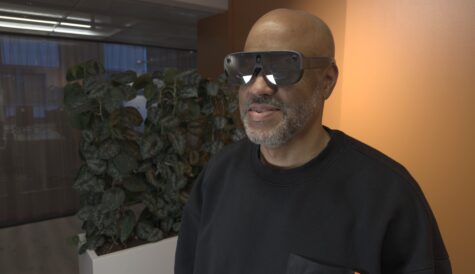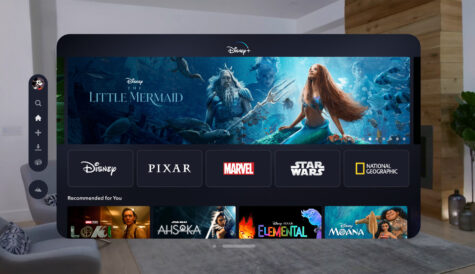
After more than 40 years of operation, DTVE is closing its doors and our website will no longer be updated daily. Thank you for all of your support.
The VR hotlist
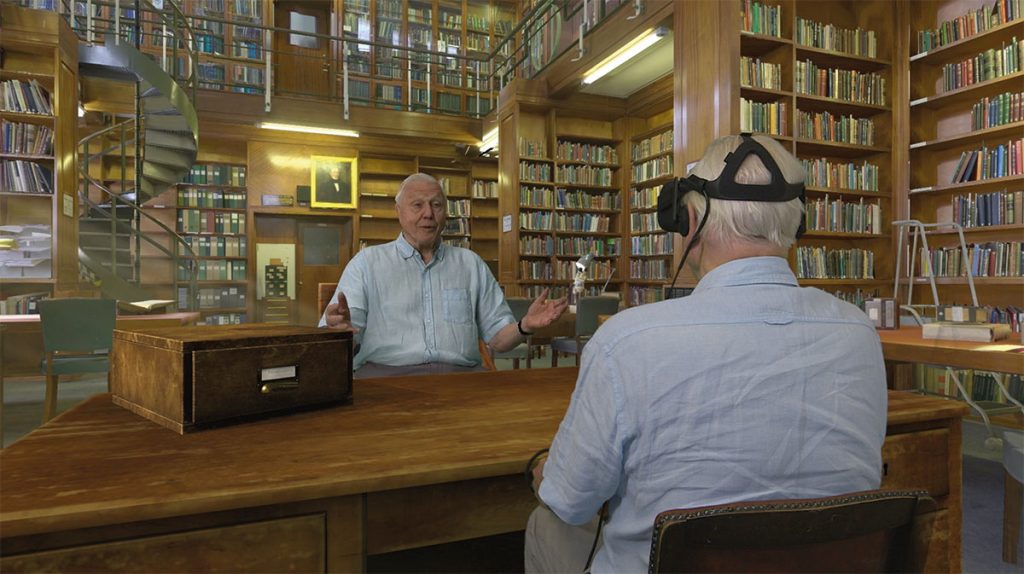 The entertainment world is increasingly adapting to the possibilities of virtual reality, experimenting with a format that stretches far beyond the realms of television. Andy McDonald speaks to some of the leading lights in this nascent but quickly evolving market
The entertainment world is increasingly adapting to the possibilities of virtual reality, experimenting with a format that stretches far beyond the realms of television. Andy McDonald speaks to some of the leading lights in this nascent but quickly evolving market
Factory 42
Factory 42 is an immersive production studio and creative agency co-founded by former Sky executive John Cassy and BAFTA-winning director Dan Smith. Since its launch in 2016 the company has partnered with the likes of Sky, the Royal Academy of Arts and the English National Ballet on projects including Hold the World – an interactive audience with David Attenborough set in London’s Natural History Museum that shines light on rare specimens from the museum’s collection.
At Sky, Cassy oversaw a number of commercial projects, including the pay TV operator’s experiments with 3D television. While the TV industry’s flirtation with this technology has since largely fallen by the wayside, Cassy believes that we are “still in the Stone Age of the possibilities for immersive content,” with virtual, augmented and mixed reality experiences likely to become more intertwined as time goes on.
“The VR market is maturing and evolving every day. Two years ago there was over-hype – everyone was jumping on the bandwagon,” says Cassy. “We always expected there to be a shake out, a flight to quality and some companies really pushing the boundaries on what is possible in terms of interactive storytelling in this medium…. The technology is moving very quickly and the possibilities of what we’ll be able to do in the very near future are incredibly exciting.”
Cassy says that Factory 42’s focus is on interactive VR and giving people “experiences, encounters and abilities they could never normally have in their real lives”. While he is not convinced that mono 360° video will stand the test of time as a storytelling device, he describes stereo 3D 360° as a “much more powerful” format.
In terms of uptake, better hardware – specifically smaller, cheaper and better headsets – will help the traction of the consumer VR market. However, Cassy says that the content side of the business also needs to improve and more high-quality experiences released – particularly from trusted and well-known brands. While TV companies like Sky and the BBC are currently making bets on VR, Cassy says a lot of the investments from the television world are “relatively tentative” as broadcasters test audience responses and commercial models. In the longer term he anticipates greater investment.
“Entertainment-focused interactive immersive content will play a significant role in helping the medium move from the niche to the everyday for a mass audience. We expect the creators who marry the best of game development skills with TV and film production skills to emerge as the winners in the entertainment space. Some of the most-used experiences will involve gamification, many will involve a social aspect,” says Cassy.
“All content makers in VR have to think hard about why a consumer would put on a VR headset, particularly when the worlds of TV and games already contain so many great choices.”
Dreamscape Immersive
Dreamscape Immersive is a location-based VR company with a firm footing in the entertainment world. Founded in mid-2016 and in ‘stealth mode’ until early 2017, the company’s leadership team includes: chairman Walter Parkes, an Academy Award winning producer of films including Men in Black and Minority Report; co-chairman Kevin Wall who has produced some of the world’s largest live events, including the Live 8 concert series; and CEO Bruce Vaughn, who spent almost 25 years at Walt Disney Imagineering focusing on creativity and innovation at the company’s theme parks.
“It is our belief that the way mass audiences will adopt VR is through location-based VR experiences,” Vaughn tells Digital TV Europe. “Location-based VR creates a uniquely social and highly repeatable experience that fosters an immediate sense of collaboration and trust – one that is shared. Users can step into each world and fully immerse themselves.”
Dreamscape offers untethered VR experiences that allow participants to explore and interact within cinematic worlds. Its technology was created by Swiss research institute Artanim as part of its work in the medical industry and Vaughn claims it is unique in how it creates a latency-free shared and social experience. “It’s this combination of group activity, unparalleled immersive tech, and vibrant storytelling that’s defining our approach.”
 The company has won backing from major entertainment companies including AMC Entertainment, Nickelodeon, 21st Century Fox, and Warner Bros and closed a US$30 million Series B round of funding in December. Since then it has hosted a sold-out pop-up at the Westfield Century City Mall in Los Angeles – an experience called Alien Zoo (left) that transported up to six visitors at a time to a virtual space zoo where they were able to interact with endangered interplanetary creatures like ‘frogcats’ and ‘megaraffes’.
The company has won backing from major entertainment companies including AMC Entertainment, Nickelodeon, 21st Century Fox, and Warner Bros and closed a US$30 million Series B round of funding in December. Since then it has hosted a sold-out pop-up at the Westfield Century City Mall in Los Angeles – an experience called Alien Zoo (left) that transported up to six visitors at a time to a virtual space zoo where they were able to interact with endangered interplanetary creatures like ‘frogcats’ and ‘megaraffes’.
Vaughn says the narratively-driven experience was designed to include moments of awe, wonder and fear, culminating in a sense of collaboration and accomplishment. The feedback, he says, was “extremely positive” with Dreamscape now planning to open its first permanent location at the same LA mall later this year.
“While some companies are focused on creating VR centres aimed at early adopters, or ones that cater just to gamers, we’re focusing on an entirely new commercial art form that appeals to mass audiences,” he says. “To take VR to a larger consumer market, we need experiences that take the best of gaming, movies and theme park attractions and allows people to simultaneously be an observer and a participant. Also, the technology is what’s behind the magic; it’s not the magic. We have to focus on narrative and experience, and the tech should almost be invisible.”
For Vaughn, there is enormous public fascination with VR but the technology is “not quite ready for the home”. As he sees it, taking a location-based approach at this stage both broadens the consumer opportunity and taps into an appetite in the market for ‘destination retail’.
“In addition to entertainment experiences, the possibilities of what location-based VR can offer are endless. We see opportunities for location-based VR in categories such as training – medical, design, sports, military – education, empathy, therapy, communications, healing, travel and connecting elderly and immobile people to loved ones and the world.”
Vreal
Vreal is a service that turns virtual reality games into shared experiences, expanding on the gaming broadcast idea popularised by services like Twitch and YouTube Games and applying it to the VR gaming world. “We were inspired by the opportunity to create a better way to consume VR entertainment while you are in VR,” says company founder and CEO Todd Hooper. Vreal allows content creators to share VR titles with an audience watching from their own headsets.
“As a viewer, I’m not tied to the player’s perspective like I am when I’m watching a YouTube video or hanging out in chat with my favourite streamer. I have full agency to move around and experience VR content from any perspective I want, while getting a richer social experience with friends who are in the VR world with me.”
Like many new services in the VR space, Vreal blurs the boundaries of what an entertainment service can offer by combining elements of gaming and social media. “We see Vreal as complementary to video platforms like YouTube, Twitch, and Mixer,” says Hooper. “What we offer is an immersive livestream/social experience for people who have VR headsets. Vreal also gives content creators the ability to make video content for their audiences watching on flat screens, so we absolutely see that as complementary for existing platforms.”
It is still early days for the company, which raised US$11.7 million (€10.1 million) in Series A funding in February ahead of the launch of its service. The round was led by Axioma Ventures and included new investors Intel Capital and Akatsuki Entertainment Technology Fund. It also resulted in games industry veteran Chet Faliszek and Maker Studios’ former chief audience offer Chris Williams joining the board.
Hooper says the investment will primarily be used to bring Vreal to market, with an early access release on the Steam platform slated for this summer that will support HTC Vive, Oculus Rift, and Windows Mixed Reality headsets. “At first you’ll be able to party up with friends and watch recorded VR content together. Over time we’ll add features including support for more VR games and livestreaming.”
Asked what conditions are needed for a significant consumer VR market to emerge, Hooper likens the current VR market to the early days of mobile gaming. “People expected the ‘killer app’ for mobile to come from the existing publishers. Instead it arose from newer, smaller companies like SuperCell and King, which nobody anticipated. It’s still very early in VR, and we see great new games and exciting hardware announcements every month. There’s already a passionate community of VR gamers that are looking forward to every new announcement.”
Baobab Studios
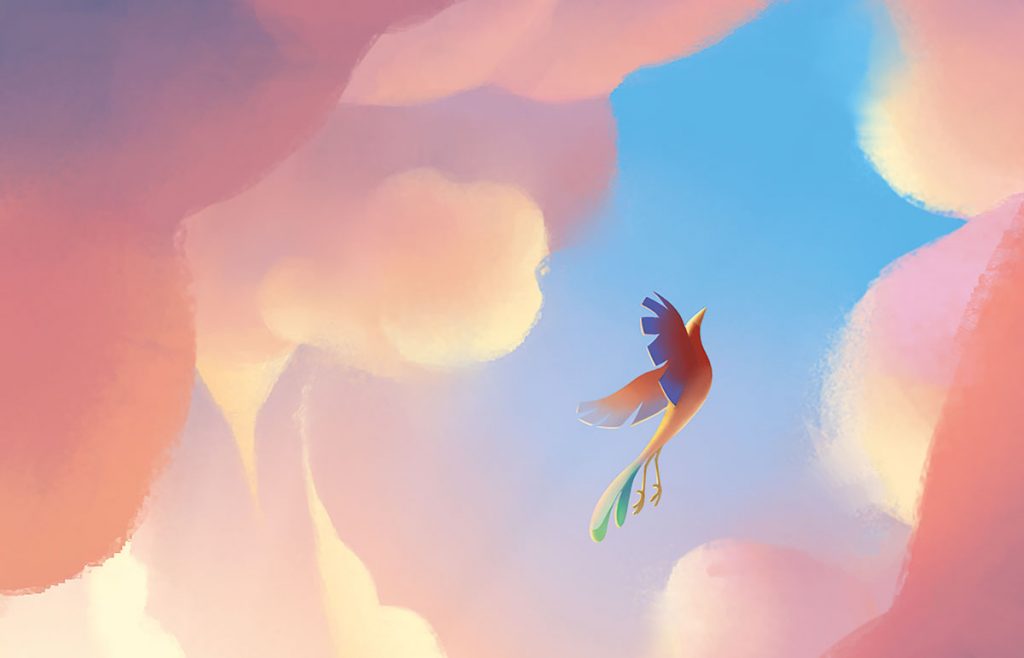 Baobab Studios was co-founded in late 2015 by CEO Maureen Fan, the former vice president of games at Zynga, and chief creative officer Eric Darnell, an animated film veteran who directed all four Madagascar films and Antz! during a long and successful spell at Dreamworks Animation.
Baobab Studios was co-founded in late 2015 by CEO Maureen Fan, the former vice president of games at Zynga, and chief creative officer Eric Darnell, an animated film veteran who directed all four Madagascar films and Antz! during a long and successful spell at Dreamworks Animation.
Fan tells Digital TV Europe that when her engineers at Zynga, famed for its Farmville franchise, hacked a new game into a VR headset for fun she realised “it was the future of animation”. Darnell, she says, “was sold once he put on the mobile headset,” realising that VR provides the opportunity for audiences to form deeper bonds with characters than traditional media. Fan and Darnell joined forces and Baobab Studios was born.
Since then it has developed a handful of acclaimed animated VR experiences, winning its first Emmy for best interactive media for Invasion!, which Fan says has become “the top downloaded VR app across the entire VR ecosystem”. Baobab announced Crow: The Legend (above) at the Cannes Film Festival earlier this year, an experience inspired by a Native American story that is voiced by talent including John Legend, Ready Player One’s Tye Sheridan and Oprah Winfrey. It also recently premiered Jack, Part 1 at the Tribeca Film Festival – an experience that combines immersive theatre with VR technology and animation.
“People oftentimes ask us, ‘Is this storytelling? Is it a game? Is it a film? How do you categorise it?’ I like to say that it’s a completely different medium and we try to create new terms instead of using old ones,” says Fan. “Our creative vision for VR is that you can have the empathy of film, the agency of games, and the motivation of real life.”
VR allows for “bigger-than-life stories”. Viewers care about the characters, as they would in a film, but are also able to engage and respond, as they are in a games engine-driven experience. Unlike a videogame, the focus is not to ‘win’. “We feel this is something that’s unique to VR, and we think it has a huge, profound impact on showing humans what it means to be human.”
While it is difficult to predict a timeline for the mainstream adoption of VR, Fan says that right now the key challenges are low consumer penetration of VR headsets, friction using the hardware and, most importantly, a lack of high quality content. “The number-one thing that needs to happen is the creation of more higher-quality VR content,” she says. “People purchase consoles and platforms because they feel the content is worth it. We need more high-quality content to entice users to purchase headsets and a continuous stream of high quality content to have people continue to come back to VR/AR.”
Fan says that the VR market has changed tremendously since Baobab was founded, but in an unexpected way. She describes a natural tech cycle for new technologies that goes from hype, to disillusionment to enlightenment and admits VR is currently “in the trough of disillusionment”. However, Fan is confident that VR will live up to its potential.
“Technology takes much longer than people expect to disrupt. However, when it does, the disruption is much larger than expected,” she says. “When we talk to the best venture capitalists, none of them question to this day if VR will become a thing. The question is when is it going to arrive and how do you time it correctly?”
“We believe the market for VR animated experiences and interactive VR experiences is going to be strong. The benefit of VR is about taking you to a completely different place, a different world. It’s about escaping which is why I think it makes for truly great entertainment.”
BBC VR Hub
In December the BBC launched a virtual reality production studio, BBC VR Hub, in a bid to explore the nascent technology. Head of commissioning for VR Hub, Zillah Watson, tells Digital TV Europe that the BBC’s focus is to create high-quality, high-impact pieces that will interest audiences and give them a first taste of what may follow in this medium.
“The ability for VR to create moving, engaging and memorable experiences – when it’s done right – seems unparalleled when compared to other traditional mediums,” says Watson. “We feel we have a responsibility, as part of our remit to innovate for future audiences, to explore that potential.”
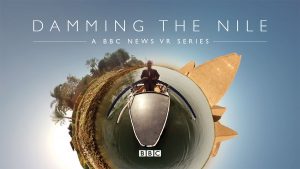 To date, the BBC has produced a number of experimental ‘true VR’ pieces, like We Wait, The Turning Forest, and Home – A VR spacewalk, as well as 360° video experiences like its recent two-part virtual reality news documentary series Damming the Nile. Watson says the BBC is interested in exploring both true VR and 360° video, with both formats able to transport the viewer to another place. While true VR offers more immersion, 360° video is less expensive and quicker to produce, which is beneficial for content such as news.
To date, the BBC has produced a number of experimental ‘true VR’ pieces, like We Wait, The Turning Forest, and Home – A VR spacewalk, as well as 360° video experiences like its recent two-part virtual reality news documentary series Damming the Nile. Watson says the BBC is interested in exploring both true VR and 360° video, with both formats able to transport the viewer to another place. While true VR offers more immersion, 360° video is less expensive and quicker to produce, which is beneficial for content such as news.
“As technology evolves there could well be a merging of the two technologies to create hyper-realistic, interactive VR that makes the distinction less clear,” says Watson. “Volumetric and light-field video are two examples helping to blur the lines.”
While gaming is a natural market for virtual reality, not least because the videogames industry has been developing stunning virtual worlds for decades, Watson points out that a number of broadcasters and TV companies have also been dipping their toes in the water over recent years. “Many recognise the potential, as well the barriers, and want to learn VR story-craft while giving audiences fantastic experiences.”
Experimentation is a good thing, but Watson cautions that a “deluge of low quality experiences” could put people off this new medium and claims there is a careful balance that must be struck. Her advice for anyone looking into the VR space now is to put the audience at the heart of the experience, explore what resonates and give people a good reason to put a headset on.
“For a broadcaster, and especially for the BBC, we’re looking at how VR can help us in our core mission to inform, educate and entertain. We’ve already seen from our projects and experiments so far that it certainly can.”
“From putting people in the shoes of a migrant making a perilous journey, to taking people back in time and experiencing major historical events, and even sending people into space, the reaction from audiences has been overwhelmingly positive. We’re just scratching the surface of what’s possible.”
